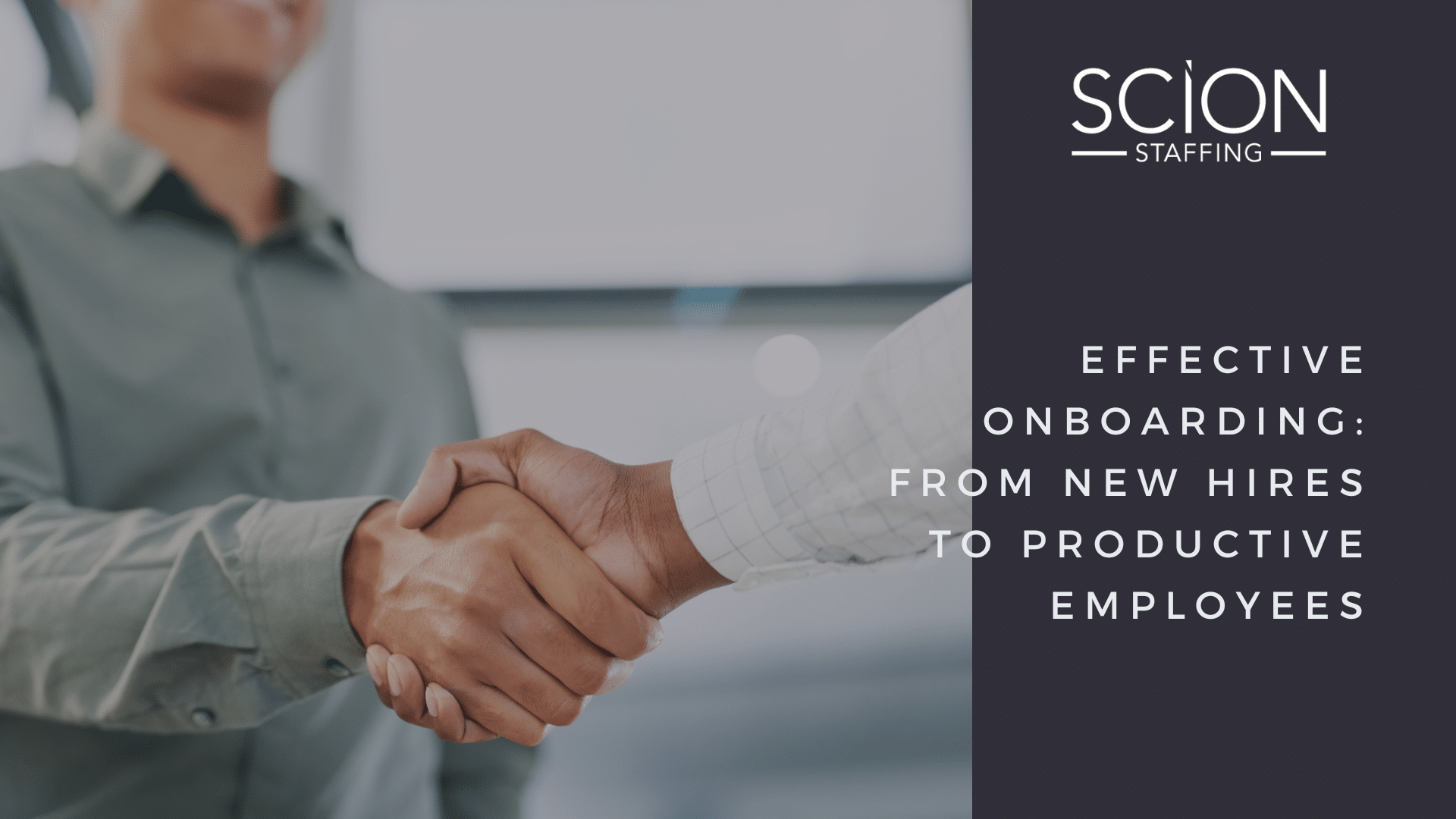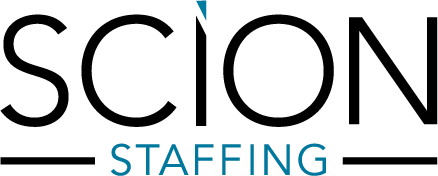
14 Jan Effective Onboarding: From New Hires to Productive Employees
In the bustling world of business, onboarding has transformed from a mere procedural step to a strategic investment that can uplift an entire organization’s productivity and morale. Consider this: companies with robust onboarding processes see a tremendous 82% increase in new hire retention and a 70% boost in productivity. These figures aren’t just numbers; they’re a testament to how onboarding can be the lifeblood of a thriving workplace. For business owners, HR managers, and recruiters, understanding and implementing a well-structured onboarding process can be the game-changer your organization needs. It’s more than just welcoming new hires; it’s about setting the stage for their success and, in turn, the success of your business.
Discover the importance of onboarding in the workplace, how to create a strong program, and how to avoid common issues in our latest article.
Understanding the Importance of Onboarding
Onboarding is the vital bridge that connects fresh talent to your company’s unique universe. It’s the process that ensures they not only adapt to their new environment as well as thrive within it. A well-defined onboarding process involves several key components, each playing a crucial role in smoothing the transition:
- Pre-boarding: This is where the journey begins, before the actual start date. It’s about preparing your new hires for what’s to come.
- Orientation: The first official step, where familiarity with the company’s heartbeat takes center stage.
- Role-Specific Training: Equipping hires with the necessary skills and knowledge to excel in their specific roles.
- Ongoing Check-Ins and Feedback: A continuous cycle of support and evaluation to ensure ongoing improvement and satisfaction.
The Benefits of Effective Onboarding
Effective onboarding isn’t just a checkbox on a to-do list; it’s a strategic advantage. Here’s how it can transform your organization:
- Improved Employee Retention: By making new hires feel welcome and prepared, you significantly reduce costly turnover. Employees who feel valued are more likely to stay and grow with the company.
- Increased Productivity: A structured process gets new employees up to speed faster, allowing them to contribute meaningfully from the outset.
- Enhanced Employee Satisfaction: When employees start off on the right foot, their overall job satisfaction improves, leading to higher engagement and performance levels.
- Stronger Organizational Culture: Onboarding is your chance to engrain your company’s values and mission in new team members, fortifying the organizational culture.
- Faster Time-to-Productivity: Well-onboarded employees hit the ground running, minimizing downtime and maximizing output.
Key Components of a Successful Onboarding Process
A successful onboarding process is a strategic investment in your new hires’ future. By crafting a well-structured onboarding experience, you can significantly impact employee satisfaction, productivity, and retention. To achieve these goals, let’s delve into the key components of a successful onboarding process.
Pre-boarding
The journey to effective onboarding begins long before the first day on the job. Pre-boarding is your opportunity to make a lasting first impression:
- Send a Welcome Email or Package: Warmly greet your new hires with a thoughtful welcome email or package that introduces them to the company culture and expectations.
- Share Important Company Information: Provide essential details about the organization, such as its history, values, and mission. This helps new hires feel connected even before they start.
- Set Expectations: Clearly outline what is expected in their role, helping to eliminate any potential uncertainties or anxieties.
Orientation
Orientation is where new hires truly begin their journey within your company. It’s about making them feel like part of the family:
- Welcome New Hires: Roll out the red carpet with a warm welcome that makes new employees feel valued and included.
- Provide a Company Overview: Share insights into the company’s mission, vision, and goals, helping new hires understand the bigger picture.
- Introduce Key Team Members: Facilitate introductions with key team members, paving the way for a collaborative and supportive working environment.
- Cover Company Policies and Procedures: Ensure new hires are familiar with the essential rules and expectations, promoting a smooth and compliant transition.
Role-Specific Training
Tailoring training to the needs of each role is crucial for enabling new hires to become effective, contributing members of the team:
- Provide Necessary Training and Resources: Equip new hires with the relevant training and resources required for their specific roles, ensuring they’re set up for success.
- Assign a Mentor or Buddy: Partner new hires with a mentor or buddy who can offer guidance, answer questions, and ensure they feel supported during their transition.
Ongoing Check-Ins and Feedback
The onboarding process doesn’t end after the first week or month; continuous support is key to sustained success:
- Conduct Regular Check-Ins: Schedule regular meetings to discuss progress, address concerns, and provide ongoing support.
- Seek Feedback to Improve the Onboarding Process: Use feedback from new hires to refine and enhance the onboarding experience, ensuring continuous improvement and satisfaction.
Best Practices for Effective Onboarding
A well-executed onboarding process is a strategic investment in your organization’s future. It sets the stage for employee success, boosts retention rates, and accelerates productivity. To maximize the impact of your onboarding program, consider these best practices:
Personalize the Experience
Every new hire is unique. To create a truly impactful onboarding experience, tailor the process to their specific needs and preferences. Consider factors such as their role, team, and learning style. By personalizing the process, you can enhance engagement and accelerate their integration into the team.
Leverage Technology
In today’s digital age, technology can significantly streamline and enhance the onboarding process. Implement onboarding software to automate tasks, track key metrics, and provide a centralized platform for new hires to access important information. This can help reduce administrative burdens and improve efficiency.
Foster a Positive Organizational Culture
A strong organizational culture is essential for attracting and retaining top talent. Create a welcoming and inclusive environment where new hires feel valued and supported. Organize team-building activities, social events, and opportunities for mentorship to help new hires connect with their colleagues and build relationships.
Measure and Evaluate
To continuously improve your onboarding process, it’s crucial to track key metrics and gather feedback from new hires. Monitor metrics such as time-to-productivity, employee satisfaction, and retention rates. Additionally, conduct surveys and interviews to gain insights into the effectiveness of your onboarding program. Use this data to identify areas for improvement and make data-driven decisions.
Common Pitfalls to Avoid in the Onboarding Process
A poorly executed process can have significant negative consequences, including decreased employee satisfaction, lower productivity, and higher turnover rates. To avoid these pitfalls, it’s essential to be mindful of common mistakes and take proactive steps to address them.
Information Overload
Bombarding new hires with excessive information can be overwhelming and counterproductive. Instead of overwhelming them, pace the onboarding process, breaking down information into manageable chunks. This allows new hires to absorb information effectively and avoid feeling overwhelmed.
One-Size-Fits-All Approach
Every new hire is unique, with different learning styles, experiences, and needs. A one-size-fits-all approach to onboarding is ineffective and can lead to a subpar experience. Tailor your process to the specific needs of each individual, taking into account their role, team, and learning style.
Neglecting Cultural Integration
Company culture is the lifeblood of an organization. It shapes employee behavior, values, and attitudes. To ensure a smooth transition, it’s crucial to integrate new hires into the company culture. This can be achieved through team-building activities, mentorship programs, and social events.
Overlooking Follow-Ups in Remote Onboarding
In a remote work environment, consistent communication is essential. Regular check-ins and follow-ups help new hires feel connected and supported. Without proper communication, remote employees may feel isolated and disengaged. Ensure that remote onboarding includes regular virtual meetings, email communication, and opportunities for collaboration.
Partner with Scion Staffing for Hiring Peace of Mind
A well-executed onboarding process is vital to enhancing employee satisfaction and boosting overall productivity. By implementing the best practices outlined above, you can transform the onboarding experience into a powerful tool for organizational success. At Scion Staffing, we’re dedicated to helping you find top-tier talent that aligns perfectly with your organizational needs, simplifying both the hiring and onboarding processes. For more insights on HR best practices and talent management, explore our wealth of online resources and recruiting services. We’re here to support your journey in making onboarding an inspiring and successful experience for your new hires.
About the Author
Patrick Chiotti (he/him) is an accomplished SEO writer and is currently the Marketing and Communications Specialist at Scion Staffing, bringing years of experience in SEO knowledge and a passion for writing to the Scion team. With additional experience in customer service roles, retail, and accounting, Patrick brings a unique set of knowledge and skills to his role while sharing the passion to continue learning about a wide range of topics so he can share his voice to a larger audience. Outside of Scion, Patrick spends his time as a football coach at the high school level and is passionate about teaching the game, while remaining a student to it. He is also a husband and father, and enjoys fitness, as well as a passion for cooking amazing food.



